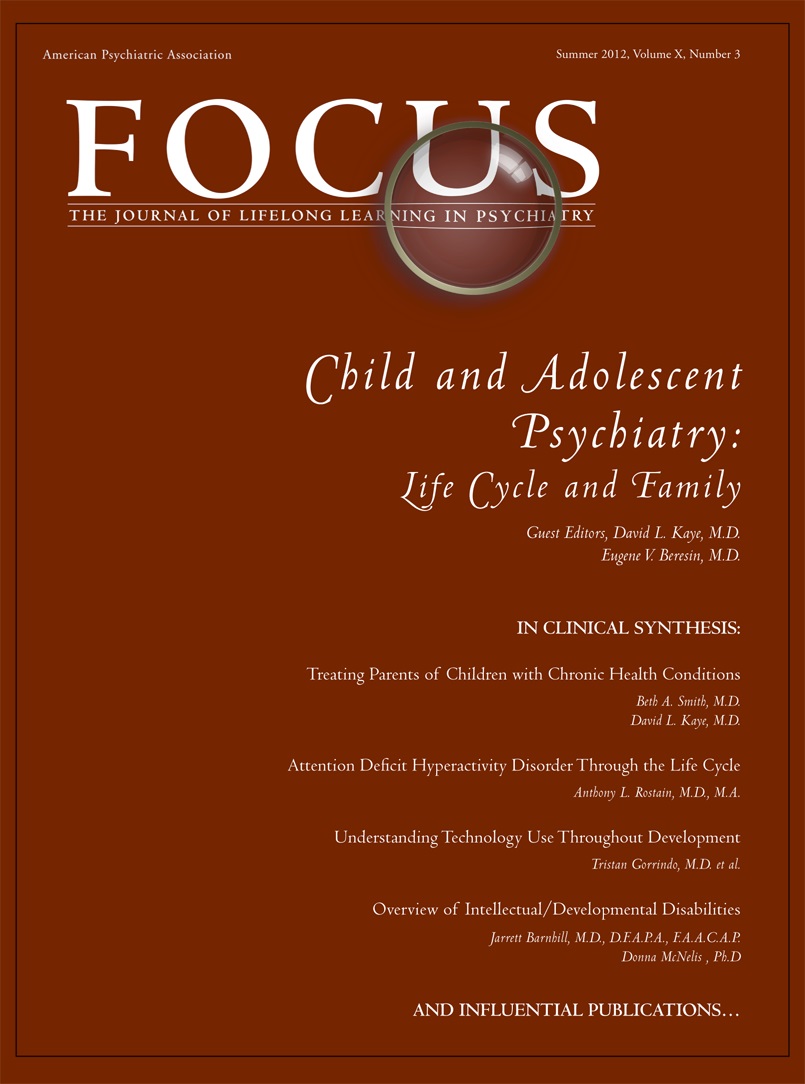Despite continual prevention efforts by health practitioners, recent estimates from national surveys such as
Monitoring the Future (MTF) and the
National Survey on Drug Use and Health (NSDUH) suggest that adolescent substance use and abuse continues to be a persistent and commonly widespread public health issue (
8–
10). Conducted annually to monitor and analyze drug use among 8th, 10th, and 12th graders, recent MTF results suggest that experimentation with drugs among adolescents has remained relatively steady over the past few years and use continues to increase with age (
11). Specifically, current MTF data indicate that 50% of 12th graders reported trying an illicit drug in their lifetime, 40% used one or more illicit drugs in the past year, and 25% used one or more illicit drugs in the past month. However, among 10th graders, the results are lower but still disturbing, with 38% of 10th graders reporting having tried an illicit drug in their lifetime, 31% using an illicit drug within the past year, and 19% using at least one illicit drug within the past month. The results for 8th graders are similar; with 20% reporting trying an illicit drug in their lifetime, 15% using an illicit drug in the past year, and 9% using at least one illicit drug within the past month (
11). Furthermore, while MTF data suggests slight decreases in alcohol and cigarette use among this population in recent years, approximately 40% of 12th graders continue to report either alcohol use in the past month or having tried cigarettes by the 12th grade, which represents a significant public health concern (
11). When looking at specific categories of licit and illicit drugs, MTF data are more alarming for rates of marijuana and nonmedical prescription medication use. According to MTF, nonmedical prescription medication use among adolescents has held a steady and high prevalence rate since 2005; with an approximate range between 14.5% and 17.5% among 12th graders reporting use in the past year. Moreover, daily marijuana use has continued to increase among the three cohorts from 2007to 2011 (+0.5%, +0.8%, and +1.5%, respectively) (
11).
The 2010 NSDUH report showed that 7% and 4.5% of youth aged 12 to 17 meet past year substance dependence/abuse and alcohol dependence/abuse criteria, respectively (
9). In addition, NSDUH data also provide insight into potential risk for future substance use through the identification of perception of risk for the use of specific licit and illicit drugs. A recent NSDUH report showed that the percentage of adolescents between the ages of 12 and 17 perceiving great risk from using selected illicit substances once or twice a week has declined since 2002. Specifically, in 2010, 65.5% of youth perceived great risk with smoking one or more packs of cigarettes per day, a decline of 4.2% since 2008. The decline in the percentage of youth that perceived great risk with smoking marijuana once or twice a week is even more alarming with a 7.2% decrease (from 54.7% in 2007 to 47.5% in 2010) (
9). Such declines in perceived risk are similar for cocaine, heroin, and LSD. Typically, a reduction in perceived risk for the use of a specific substance has been shown to be directly proportional to future and immediate increases in use of that substance. In addition, there has been a recent increase in the misuse of prescription medications (i.e., opioids, stimulants, and sedatives). According to the Treatment Episode Data Set (TEDS), adolescents entering publicly funded treatment programs reported marijuana (71.9%) or alcohol (17.7%) as their primary substance of abuse and over half (56.3%) reported first using their primary substance between the ages of 12 and 14 (
12).
The recent prevalence rates and drug use trends not only confirm that adolescent substance use continues to be a major health concern, but also, as demonstrated by the MTF and NSDUH data findings, while rates of use of some licit drugs have remained steady, there have been considerable increases in illicit drug use among this population. In addition, new drugs and rediscovery of older drugs have facilitated the cyclic patterns of substance use and abuse among American youth in recent years (
9,
11). Furthermore, the extant literature suggests that age of onset of substance use is highly correlated with future use and abuse in adulthood as well as the development of substance use disorders and dependence later in life (
7,
13,
14). Therefore, it is imperative that pediatric and adolescent treatment providers become competent in the identification of misuse and abuse among youth and employ strategies to intervene effectively.

